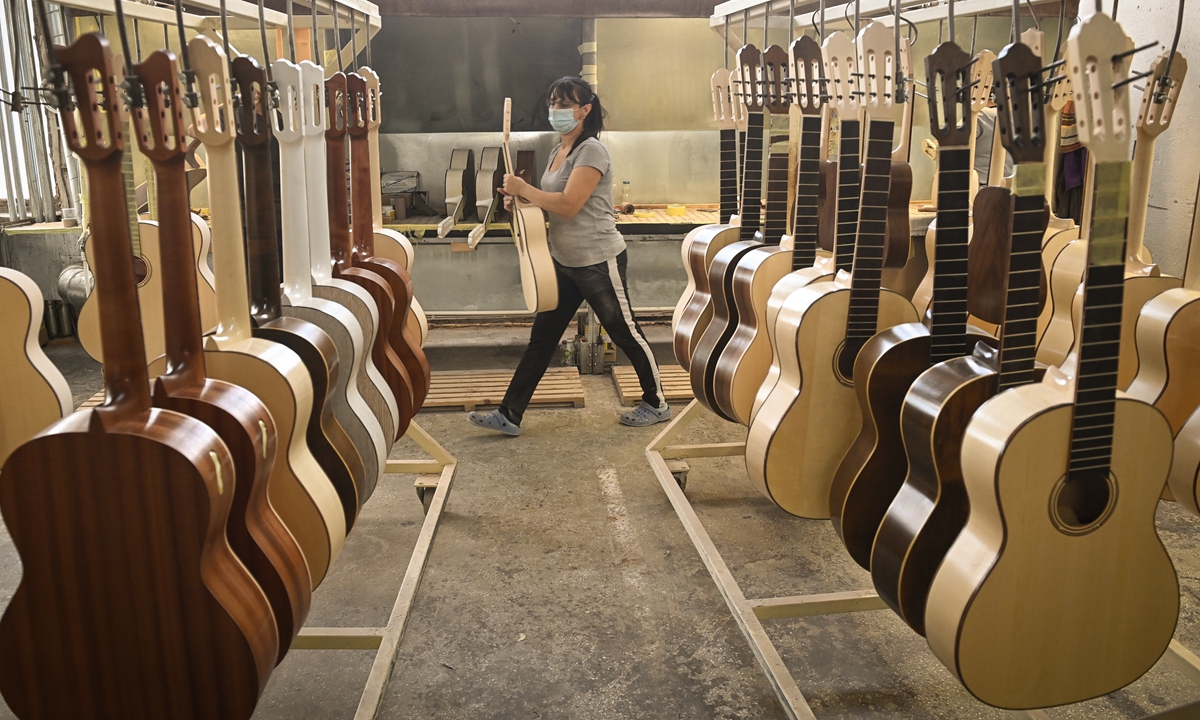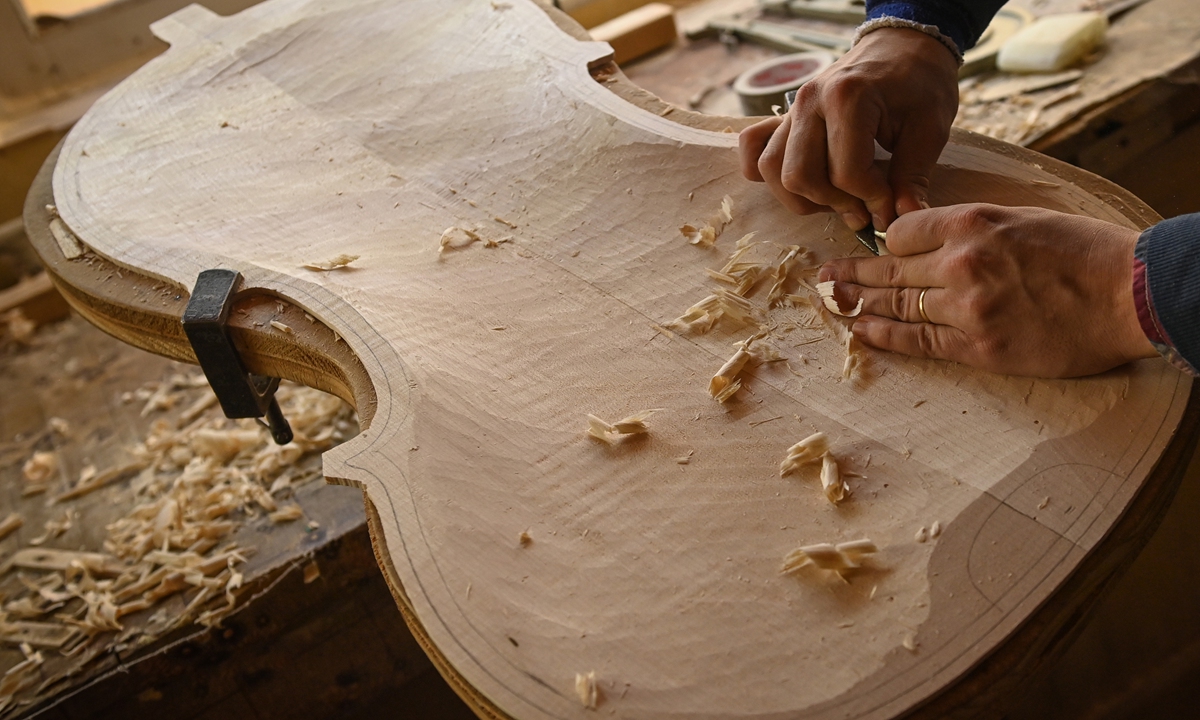
A woman prepares guitars to be varnished at the Hora musical instruments factory in Reghin, Romania on January 22. Photo: AFP

A wood worker shapes a cello face at the Gliga musical instruments factory in Reghin, Romania on January 22. Photo: AFP
Surrounded by violins hung from the ceiling and lined up on shelves, Vasile Gliga looks proudly on the fruits of his labors.
From his factory in the central Romanian city of Reghin, Gliga has been one of the city's world-famous instrument makers for more than 30 years.
His business is one of the large-scale producers in a city that also hosts master craftsmen turning out just a handful of instruments a year.
The secret to his success, he says, is simple: "Putting a little of your soul into it."
Gliga turned out his first two violins in a box room in his flat in 1988 when he was 29.
In 2020 however his business sold 50,000 instruments - from violins to double basses - only 2 percent of them going to Romanian customers.
Romania is the EU country that exports the most violins outside the bloc, according to Eurostat's 2018 figures.
But like many in his trade, Gliga worries he may be one of a dying breed.
For Romania's renowned luthiers - the craftsmen who specialize in making stringed instruments - face a twin challenge: cheaper competition from abroad and finding the next generation of craftsmen to carry on their tradition.
'There's no one left'Virgil Bandila works at the other end of the scale.
In a city where, he says, "virtually every street" has one or two luthiers at work, his small workshop employs seven craftsmen.
In 2020, they produced just 25 violins, and all of them went to foreign clients - mainly in France and Germany, but also to Japan and China.
Bandila, like Gliga, has concerns about the future.
His main worry is whether he can find apprentices to pass on the secrets of the craft.
"We were all born in the 1970s and after us there's no one left," he says of the current generation of craftsmen.
Four million Romanians have left the country in recent years, mostly for Western Europe, in the hope of building a better life for themselves.
"Young people are keener on computing," he laments - or finding less strenuous jobs abroad.
Chinese competitionGliga agrees that the craft is an exacting one.
"A high-caliber violin takes 300 hours of work over the course of a year - and that's after leaving the wood to dry for five years," he explains.
That wood must be of the best quality, and Reghin's reputation is built in part on the ancient maple trees in the surrounding forests.
"The most prized trees are the flame maples, they grow wild, shaped by the wind," says Gliga employee Cristian Pop.
Chinese manufacturers are turning out cheaper violins than those made in Romania, selling them for as little as 30 euros ($36) each.
The violins for sale on Gliga's website range from beginner models priced at around $200 to elite instruments costing several thousand.
Factory production
Reghin's pedigree in violin making stretches back to 1951, when the then communist regime set up a musical instrument factory there to take advantage of the local tradition of woodworking.
Hora Instruments is still in business, producing everything from panpipes and lyres to ukeleles, says Nicolae Bazgan, an engineer by training who has been running the factory for 54 years.
The number of instruments produced by the factory during every year of operation is meticulously recorded in a small notebook: 37 in 1951, 99,000 in 1980, 60,000 in 2019.
There were barely 37,000 in 2020, when pandemic restrictions meant the factory had to stay shut for three months.
But it has also been a training ground for some of the city's best-known luthiers: Gliga and Bandila are among those who graduated from Hora to set up their own businesses.
Others however, have simply emigrated, adding to the worries about how long Reghin's violin-making tradition will last.
Bandila, at least, has some cause for optimism.
"My hope is that my son, who is studying violin making in the UK, will come back to Reghin and take over the business."





